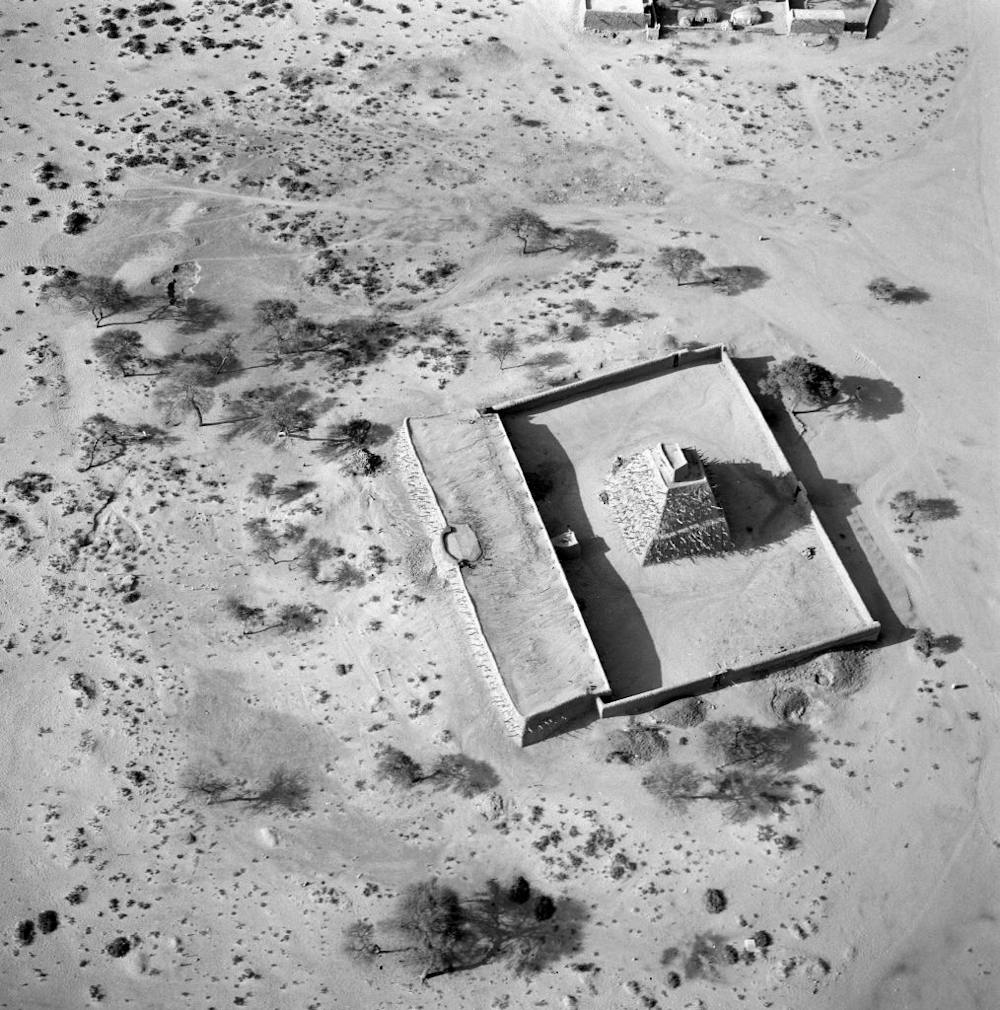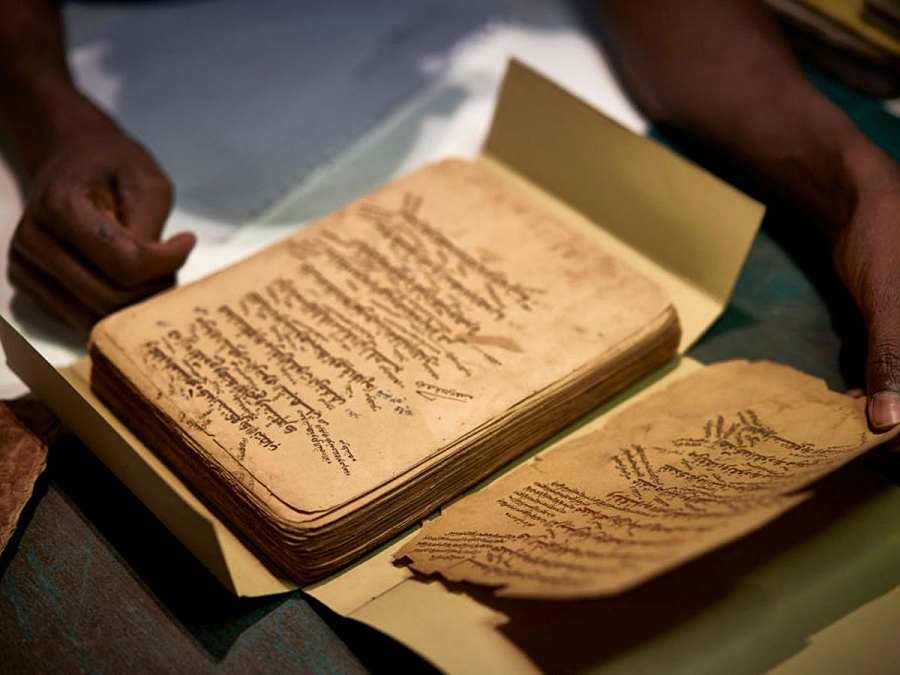Fri 01 April 2022:
The ancient Timbuktu manuscripts of Mali were back in the headlines following internet giant Google’s initiative to host a collection of them at an online gallery. The images of the documents, text in Arabic, can be found at a page called Mali Magic.
No place in West Africa has attracted more attention and resources than the city that has always captivated the imagination of the outside world, Timbuktu. There have been documentaries and books, academic studies and a renewed public interest since some of Timbuktu’s world heritage status buildings were damaged in attacks in 2012. The manuscripts, themselves, some reputed to date as early as the 1400s, were threatened and the international community responded.
While Mali Magic displays 45 very photogenic manuscripts from one private library, the site doesn’t begin to tell the full story of the wealth of West Africa’s manuscripts that are found from the Atlantic to Lake Chad.
But thanks to decades of scholarship and, recently, digitisation, that information is now accessible at a bilingual, open-access, online union catalogue of nearly 80,000 manuscripts at the West African Arabic Manuscript Database. This is a resource I began 30 years ago at the University of Illinois that now provides students access to most of the titles and authors that make up West Africa’s manuscript culture.
It’s at this website that one can access the archive of an association of 35 private Timbuktu manuscript libraries – called SAVAMA-DCI. The association has been working with universities on three continents to secure and record, now digitally, their Arabic and Arabic-script manuscripts.
The West African Arabic Manuscript Database provides an even bigger picture. It is a comprehensive inventory of over 100 public and private West African manuscript libraries. In it, we find one-third of all extant manuscripts with known authors (314 titles), written by 204 scholars, one-quarter of them from West Africa. Most of these manuscripts come from the 1800s, but have very deep historical roots.
The full story of West Africa’s manuscript culture and Islamic learning centres will finally be known when the attention that is lavished on Timbuktu’s manuscripts is also given to libraries in neighbouring Mauritania, Niger and Nigeria. But we already know a good deal.
Centres of learning
Earliest contact between North Africa and Timbuktu focused on West Africa’s gold trade. This commerce also brought Islamic teachings across the Sahara Desert. The first reference to manuscripts in Timbuktu was in the 1400s, contributing to the mystique that has always enveloped the city as a centre of Islamic education.
In fact, Timbuktu was only one of several southern Saharan towns that attracted scholars and offered Islamic learning. In the 1500s, what is called Timbuktu’s ‘Golden Age’, its famous scholars were known across North Africa.
That period waned, but Arabic learning revived again in the 1800s across West Africa in the wake of several Islamic reform movements that stretched from today’s Guinea and the Senegal River Valley to Northern Nigeria. Today’s older manuscripts in West Africa mainly date from this period.
With the decline of scholarship in Timbuktu in the 1600s, Islamic learning emerged in nomadic centres to the west (in today’s Mauritania). There’s also a national collection of manuscripts in Mauritania that is based on the contents of 80-odd private libraries. They give us a good idea of what was traditionally found in manuscript libraries.
What’s in West Africa’s manuscripts?
The exact subject matter in each of the categories would vary somewhat from one library to the next. But the dominant subject – legal writing – tended to account for one-quarter to one-third of all the manuscripts.
West Africa’s manuscript culture evolved, for the most part, outside any state system. In the absence of a central authority, juridical matters were dispensed by local legal scholars who could cite precedent, case law, to resolve thorny problems.

Traditional mosque in the Timbuktu area. Photo by Michel HUET/Gamma-Rapho via Getty Images.
The next most important subject in the manuscripts deals with the Prophet Muhammad, mainly biographical and devotional writing. The ratios of manuscripts dealing with mysticism (Sufism); the Qur’an (including copies of the Holy Book) especially recitation styles; Arabic language (lexicology, syntax, prosody, pre-Islamic poetry); and theology vary, each subject accounting for 7% to 13% of the manuscripts in most libraries.
Locally-written poetry and literature is generally the smallest slice of manuscripts, albeit – with correspondence – some of the most interesting. Oddly, the subject of history, like geography, is almost entirely ignored in many collections.
This reminds us, that Arabic and by extension, Arabic script was at base a religious language used for religious purposes, and its use for secular subjects was not common.
The power of the Arabic alphabet
More significant than these Islamic sciences, or disciplines, are the uses to which the Arabic alphabet was applied across West Africa. Arabic uses a phonetic alphabet; each letter always produces the same sound. What this means is that the Arabic script can be used to write any language.
To explain the Arabic of the Qur’an, teachers frequently translated key words into the students’ African language (written in Arabic script). Many West African manuscripts that were used in teaching show these interlineal insertions. From this practice it was an easy step to write classic legends, or memory aids, or poetry in African languages – all in Arabic script.
The name this writing is given in Arabic is “`ajamī” (writing in a foreign language). These manuscripts make up about 15% of most collections in West Africa today.
Disclosure statement
Charles C. Stewart does not work for, consult, own shares in or receive funding from any company or organisation that would benefit from this article, and has disclosed no relevant affiliations beyond their academic appointment.
Featured Image: MICHELE CATTANI/AFP via Getty Images.
This article is republished from The Conversation under a Creative Commons license. Read the original article.
___________________________________________________________________________________________________________________________________________
FOLLOW INDEPENDENT PRESS:
TWITTER (CLICK HERE)
https://twitter.com/IpIndependent
FACEBOOK (CLICK HERE)
https://web.facebook.com/ipindependent
Think your friends would be interested? Share this story!





